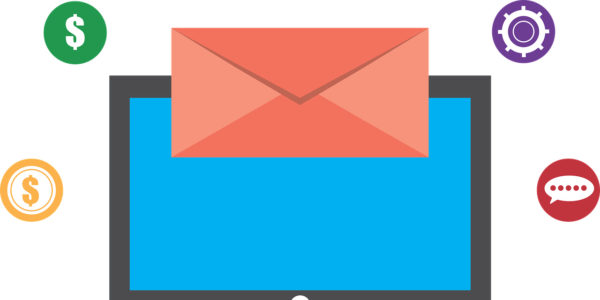How to Make Sales Feel Personal in a Virtual Age

People already don’t like to be sold. And now that our world is increasingly virtual, there’s even more noise to compete with. It can seem impossible to reach your prospects on a human level.
But if you’re able to make your outreach come across as more authentic and less sales-y, then you’ll have a better chance of making a sale.
To help, here are four ways that you can make sales feel more personal in our current virtual age.
1. Personalizing Your Sales Email Outreach
Personalized email isn’t anything new, but it’s just as important as ever. Pretty much everyone who has ever used email has experience with email personalization on the receiving end. When you receive an email that says “Hi (your name),” you’re receiving a personalized email.
However, email personalization doesn’t end with greetings. Marketers and sales professionals are coming up with new ways to customize emails for recipients all the time.
For example, you can create personalized emails based on a lead’s past activity on your website, their position at work, their interests, or anything else you have data on. If you’re selling a product that can be used by both marketers and salespeople, then it can be useful to tailor your email to that individual’s role.
There is one caveat, though: don’t get too personal. While people generally appreciate a small amount of genuine interest, they do not want to feel like you’ve been stalking them. So, don’t go overboard trying to personalize your emails. Mentioning that you see they work at Tesla, which is available on their LinkedIn profile? Fine. Saying that you hope they enjoyed their vacation in Cancun, which you found on their personal Instagram? Too far.
2. Sending Custom Videos
Custom videos often go hand-in-hand with email personalization because they’re a great addition to any email that you’re trying to make more personable. In short, this technique is exactly what it sounds like: when you send an email, you take a video of yourself and include a link to it in your email.
For example, when sending a cold outreach email to a new lead, you could record a video using a tool like Vidyard or Loom in which you directly address your lead, introduce yourself, and explain how your product can meet their specific needs. This can be much more effective than just sending text alone as it allows your lead to get to see you as a person, not just a piece of email that they might consider spam.
If you go this route, consider using one of the many tools that are designed specifically for this application. Definitely do not send video files as attachments, as that will ring malware alarm bells in your receiver’s heads. Plus, they probably won’t want to have to download your video even if they aren’t worried about malware.
3. Using LinkedIn Voice Messaging
If you’ve never heard of LinkedIn voice messaging, you’re not alone — it hasn’t yet reached mass adoption by the platform’s users.
The theory behind using LinkedIn voice messages is pretty similar to that of personalized videos: by going beyond text, you’re giving leads an opportunity to connect with you more as a person. With voice messages, you share your voice, which can help people get to know you better.
Plus, voice notes also allow you to express more nuance to your leads. After all, it’s common knowledge that communication is about a lot more than just the words you say — tone and body language play a big role. By leaving someone a voice message, you extend your sales canvas into the realm of sound and tone, which opens up new possibilities to experiment and paint with.
However, there are downsides to sending LinkedIn voice messages. While leads can quickly scan a text message to see if it’s relevant to them, busy professionals may just skip over voice messages entirely. On the other hand, since voice messaging is relatively rare, your leads may be intrigued — or sketched out.
You’ll have to experiment a bit to figure out what works. For example, you may find that adding a voice message to a text message works wonders, or you may discover that voice messaging is a great way to communicate after your lead has already responded to your first text message, but that it doesn’t work when reaching out at first.
4. Sending Gifts to Prospects
Everyone loves receiving gifts — and sending them is a joy as well. So, what better way to make sales than by engaging in a practice that’s fun for everyone involved?
Sending gifts to sales prospects has been standard practice for ages, but it can really help you stand out — especially now. In a world that’s so focused on digital communication, receiving a physical item in the mail can really leave a lasting impression — even more so if the gift is something your prospect really likes.
If you want to send gifts to your prospects, you may want to consider using a corporate gifting tool like Sendoso or Reachdesk. However, you can always go old school and order gifts yourself.
One caveat to be mindful of: although gifting can be great, you also run the risk of harming a relationship with your prospect if you send them the wrong gift. For example, sending a box of artisanal beef jerky to a decision-maker who happens to be vegan could sink your sale right then and there. So, be careful about what you’re sending out and consider all angles of how the gift you’re giving could be interpreted.
Key Takeaways
The world may be becoming increasingly virtual, but there are still many ways to make real, genuine connections with your sales prospects. Between personalized email, custom videos, LinkedIn voice messaging, and sending gifts, you’ve got four great options to look into for your next sales campaign.
Get our Enewsletter
Get the latest sales leadership insight, strategies, and best practices delivered weekly to your inbox.
Sign up NOW →